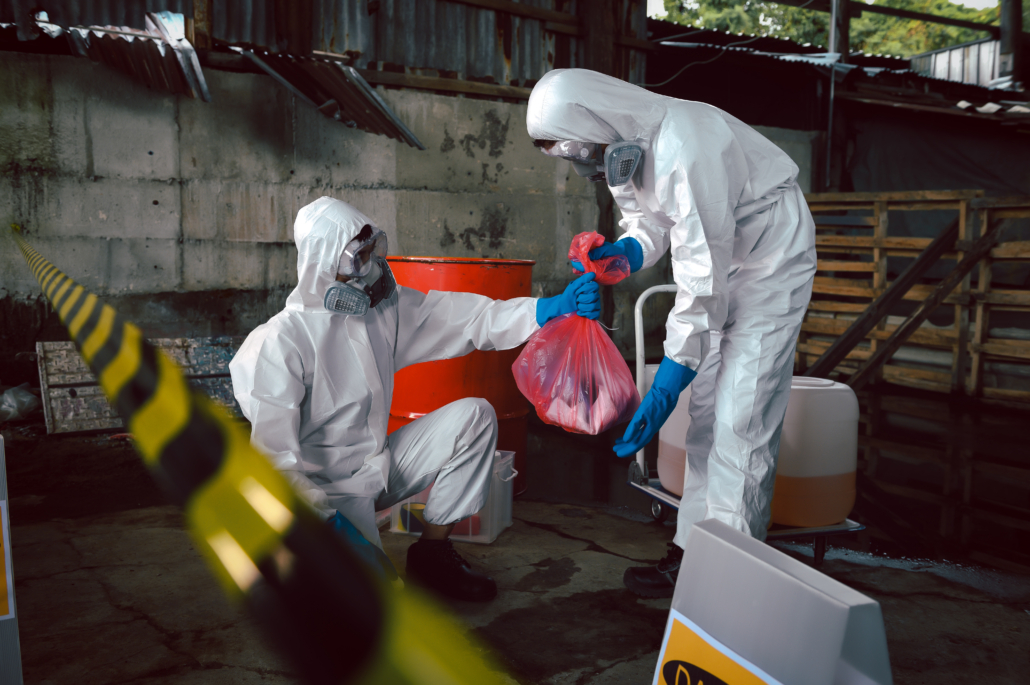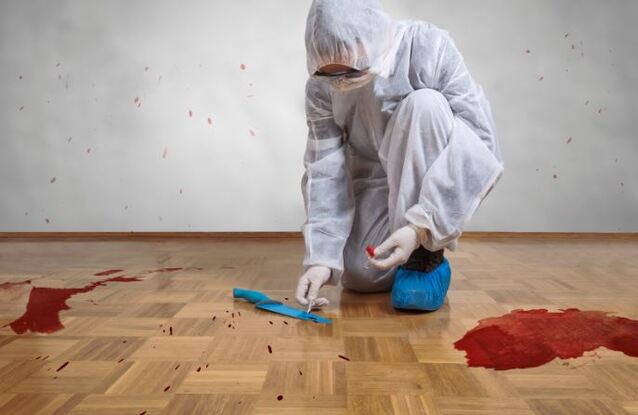Expert Blood Cleanup: Making Certain Safe and Thorough Purification
Wiki Article
Professional Biohazard Cleaning and Decontamination for Blood, Bodily Fluids, and Hazardous Materials
In the realm of biohazard cleaning and purification for blood, physical liquids, and hazardous materials, accuracy and know-how are vital. The potential health risks related to exposure to biohazards emphasize the vital requirement for meticulous handling and thorough cleanup. Specialized training equips experts with the knowledge and skills essential to attend to these unsafe circumstances efficiently. However, it is not just concerning cleaning up; the value of employing appropriate purification methods can not be overstated. As we navigate the elaborate landscape of biohazard clean-up, comprehending the nuances of laws, compliance, and the specialized equipment at play becomes important in ensuring a safe and thorough decontamination procedure.
Wellness Dangers of Biohazard Exposure
Direct exposure to biohazards positions considerable health dangers that can lead to extreme repercussions for communities and individuals alike. Biohazards encompass a variety of organic substances, consisting of blood, physical liquids, mold and mildew, germs, infections, and various other possibly contagious products. When people enter contact with these biohazards, whether with mishaps, inappropriate handling, or environmental direct exposure, they deal with the threat of contracting significant health problems or diseases.Among the key wellness risks linked with biohazard exposure is the transmission of infectious illness. Bloodborne pathogens such as HIV, hepatitis B and C, and various germs can be present in biohazardous materials, posturing a straight hazard to human wellness. Inhaling air-borne biohazards like mold and mildew spores or entering call with contaminated surfaces can also lead to breathing problems, allergies, and other damaging health and wellness results.
Furthermore, biohazard direct exposure can have long-term health and wellness implications, with some illness materializing years after the initial contact (Blood Cleanup). Therefore, it is vital to focus on appropriate biohazard cleaning and decontamination to mitigate these health threats and make sure the security of communities and people

Specialized Educating for Biohazard Cleaning
When it pertains to dealing with biohazard clean-up effectively and safely, specialized training plays a basic duty in making sure correct decontamination procedures are followed. Biohazard clean-up calls for certain expertise and abilities to properly mitigate risks associated with bloodborne pathogens, bodily fluids, and unsafe materials. Professionals learnt biohazard clean-up undertake rigorous guideline on exactly how to safely handle, eliminate, and get rid of biohazardous products to avoid contamination and exposure.Specialized training for biohazard clean-up covers a series of vital subjects, including correct personal protective equipment (PPE) usage, bloodborne microorganism recognition, decontamination strategies, and contaminated materials disposal methods. People trained in biohazard cleaning are geared up with the required proficiency to assess contamination levels, identify possible risks, and implement appropriate clean-up procedures in conformity with regulative criteria.
Continuous training and education are vital in the area of biohazard cleanup to stay upgraded on the most up to date decontamination technologies, safety methods, and regulations. By buying specialized training, biohazard cleanup specialists can successfully reply to emergency situation cleanup scenarios and safeguard both public health and the atmosphere.
Relevance of Proper Purification Strategies
Using appropriate purification strategies is essential in biohazard clean-up to efficiently reduce and eliminate unsafe products wellness dangers. Efficient purification not only makes certain the elimination of noticeable traces of blood, bodily fluids, and other biohazards yet also targets undetectable virus that may posture major wellness threats otherwise effectively removed. By complying with rigid decontamination protocols, educated professionals can dramatically decrease the threat of direct exposure to unsafe microbes, viruses, and microorganisms that could bring about infections or illness.Proper decontamination strategies include making use of specialized devices and anti-bacterials that are especially developed to reduce the effects of biohazards successfully. Complete cleansing and disinfection of contaminated areas are necessary to protect against the spread of virus and make certain a secure setting for occupants. In addition, the appropriate disposal of biohazardous waste following decontamination procedures is essential in stopping contamination of other surfaces or people.

Equipment and Tools for Safe Cleaning
When dealing with blood, physical liquids, or hazardous materials, biohazard cleaning experts depend on specialized gear to reduce direct exposure risks and thoroughly sanitize the affected location. Furthermore, biohazard cleansing packages consisting of anti-bacterials, absorbing materials, and biohazard bags are made use of to safely consist of and dispose of polluted things.Blood Cleanup Advanced cleansing devices like hospital-grade anti-bacterials, HEPA-filtered vacuum cleaners, and misting machines are utilized to sterilize surfaces and get rid of biohazards properly. Specialized equipment such as sharps containers and biohazard garbage disposal containers are used to safely manage sharp items and biohazardous waste products. By utilizing the right devices and devices, biohazard cleaning experts can ensure a comprehensive cleaning process that focuses on safety and reduces health threats for both workers and occupants of the damaged area.
Rules and Conformity in Biohazard Cleansing
Appropriate adherence to regulations and conformity criteria is extremely important in biohazard cleansing to make sure the safety and security of both employees and the setting. Federal government companies such as OSHA (Occupational Safety and Health Administration) and the EPA (Epa) have established particular standards for biohazard clean-up treatments to lessen health and wellness dangers and ecological contamination. These guidelines cover a series of facets consisting of the handling, transportation, and disposal of biohazardous products, along with the necessary training and protective devices needed for personnel associated with the cleaning procedure.Biohazard cleansing firms need to remain current with these guidelines to assure that their operations fulfill the called for security requirements. Failure to conform with these policies can cause serious repercussions, including fines, legal activity, and endangering the health and wellness of individuals and the environment. By complying with stringent policies and compliance measures, biohazard cleansing firms can effectively minimize dangers and ensure a secure and thorough clean-up procedure for all parties included.
Final Thought
To conclude, biohazard cleaning and purification call for specialized training, correct methods, and adherence to policies. Exposure to blood, bodily liquids, and hazardous materials positions significant health and wellness dangers, making it vital to use the appropriate devices and tools for safe cleaning. By adhering to rigorous protocols and standards, specialists can properly mitigate the threats connected with biohazard direct exposure and make certain the security of both themselves and others.
As we navigate the elaborate landscape of biohazard clean-up, understanding the nuances of regulations, conformity, and the specific equipment at play becomes essential in making sure a secure and thorough decontamination procedure. (Blood Cleanup)
When it comes to taking care of biohazard cleanup effectively and securely, specialized training plays an essential role in guaranteeing correct purification procedures are followed.Making use of proper purification techniques is crucial in biohazard cleaning to properly decrease and eliminate unsafe products wellness threats. Additionally, biohazard cleansing sets having anti-bacterials, absorbing products, and biohazard bags are utilized to safely contain and get rid of of polluted products.
Government firms such as OSHA (Occupational Security and Health Management) and the EPA (Environmental Security Agency) have established certain standards for biohazard clean-up procedures to lessen health and wellness risks and environmental contamination.
Report this wiki page